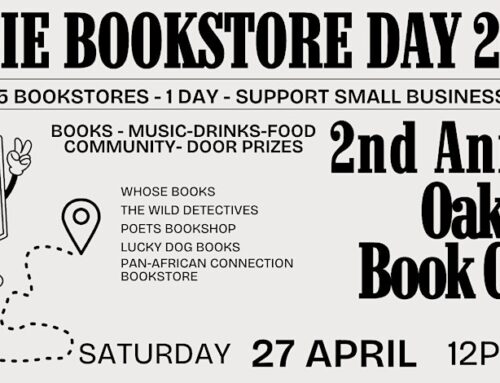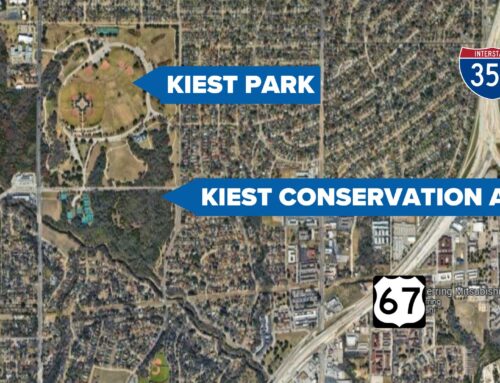What possibly could be the arguments to favor building a six-lane toll road in the parkland between the Trinity River levees?
That’s what some 300 people who attended Texas state Rep. Raphael Anchia’s town hall meeting at Rosemont elementary school Wednesday wanted to know.
The road is in line with the Balanced Vision Plan, begun in 1998 and approved in 2003. That plan calls for flood protection, lakes and other amenities between the levees, improved transportation for people in Oak Cliff and South Dallas to jobs in North Dallas, improvement of the Trinity’s lower chain of wetlands, and economic development as an effect of riverfront development.
Michael Morris, transportation director of the North Central Texas Council of Governments, says all five aspects must go forward for the Balanced Vision Plan to be true. He and other supporters of the toll road say it is fair and equitable to build the road so that people in southern Dallas have better access to jobs in North Dallas.
“The existing (traffic) system is nonfuctional for people trying to get back and forth to their jobs every day,” Morris said.
The Balanced Vision Plan found there is too much traffic on the Mixmaster, which is the stretch of Interstate 35 roughly between Interstate 30 and Oak Lawn, and in the Canyon, the stretch of I-30 between Riverfront and Fair Park. A toll road would be the cheapest way to solve those traffic woes, former Dallas City Councilman Craig Holcomb told the crowd.
You have to give them credit for showing up to argue in favor of the road amid an audience heavily opposed to it. Anchia gave three panelists on each side of the debate 15 minutes to state their cases.
Toll road opponents laid out their arguments for the home crowd.
Dallas is too dependent on cars already, and a freeway cutting through the Trinity River would not unite the city but rather divide it, urban planner Patrick Kennedy said. City and regional planners have been “deferential to traffic” over everything else, including quality of life and community.
A fraction of the cost of the toll road — $1.5 billion, although it is unfunded — could instead be spent on economic development and job growth in southern Dallas, Kennedy said. And then workers would not have to drive to North Dallas, spending money on auto maintenance, gas, tolls and parking, not to mention losing family time in traffic, but they instead could find work in their own communities.
Building freeways “always benefits the favored corridor,” in this case, North Dallas, Kennedy said.
City Councilman Scott Griggs gave an impassioned 5-minute speech. The toll road would serve no purpose, he said. And worse, it would actually damage communities, including the Oak Cliff Gateway.
When the Balanced Vision Plan was adopted 11 years ago, the Bishop Arts District was just becoming a destination for adventurous northern Dallasites and suburban dwellers. Now our neighborhood is the hottest thing going in dining, residential real estate and multifamily development. All of that happened without benefit of the Balanced Vision Plan.
An argument that the Balanced Vision Plan doesn’t work without the toll road is fallacious. Much of the plan already is in place or otherwise is going forward. The Margaret Hunt Hill Bridge now leads northern Dallasites to the restaurant incubator Trinity Groves. Developers are clamoring to build on the Dallas side of the Trinity riverfront. The Dallas Horseshoe, now under construction, will improve mobility between I-35 and I-30 and will solve many of the mixmaster’s woes. A future phase of the Horseshoe would improve the Canyon. Much of the Skyline Trail between the levees has been built, and it is funded to stretch between South Dallas and Irving. The city could begin building two 9-acre lakes between the levees next year.
“There is not a reason in the world to build this road,” Griggs said.
He argued that the road does not even follow the Balanced Vision Plan as it does not provide access to the Trinity’s parkland. And it calls for moving the Trinity River at a cost of $529 million.
Former Dallas Mayor Laura Miller, the “political architect” of the Balanced Vision Plan, now opposes the Trinity toll road. And Alex Krieger, the urban planner from Harvard University who authored the plan, has admitted the road “would be detrimental” and publicly apologized to the city of Dallas for the political bait-and-switch that led public opinion to believe otherwise.
Mayor Mike Rawlings is moving the road ahead, having hired a “dream team” of six out-of-state urban planners to design it.







